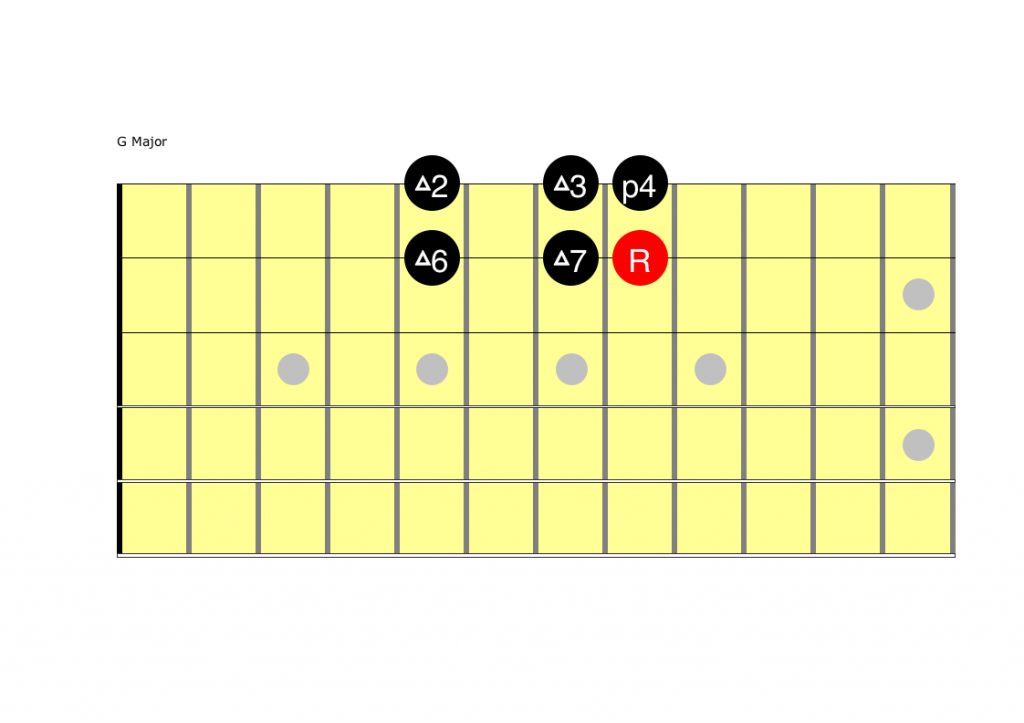Targeting chord tones
A chord is three or more notes played at the same time. When you’re playing single notes over a chord, a common starting point is playing the notes from the same scale as the key. So if the chords are taken from the key of G, you’d play G major scale over that progression. This is not incorrect, but it’s incomplete.
If you play a note from the actual chord while that chord is playing, it will sound really consonant and like it fits closely with the chord. You might not always want that sound, but it’s good to learn how to get it before you start deliberately exploiting dissonance.
Try this out now – there are a selection of backing tracks below using the chords G, D, Em, and C. First, find the root note of the chord (G, D, Em and C) on the top three strings. Play the root while the chord is playing. For beginning guitarists or more experienced players who haven’t started investigating note names yet, this is plenty-you’ll start learning where the notes are and you’ll also start identifying the sound of a root note being played against its chord.
Once you’re comfortable doing that, try playing the root note over G, then play a couple of passing notes from this set of notes (which are notes from G major) over the bar of D, aiming to end on an E note when the Em chord plays. Compare the effect. If you’re in your first six months of playing guitar, this is plenty. Use fingers 1, 3 and 4 to play these notes.
G D Em C
Acoustic
Rock/pop
Reggae
The other notes in the chord are called the third and the fifth. If you’ve played scales before, find the thirds and play the third of each chord over the progression, and then find the fifths and play those.
Then play a different chord tone on each chord and observe how each has a slightly different personality.
Now, see if you can add a few passing notes in between the chord tones.
|
Chord |
1 |
3 |
5 |
|
G |
G |
B |
D |
|
D |
D |
F# |
A |
|
Em |
E |
G |
B |
|
C |
C |
E |
G |
